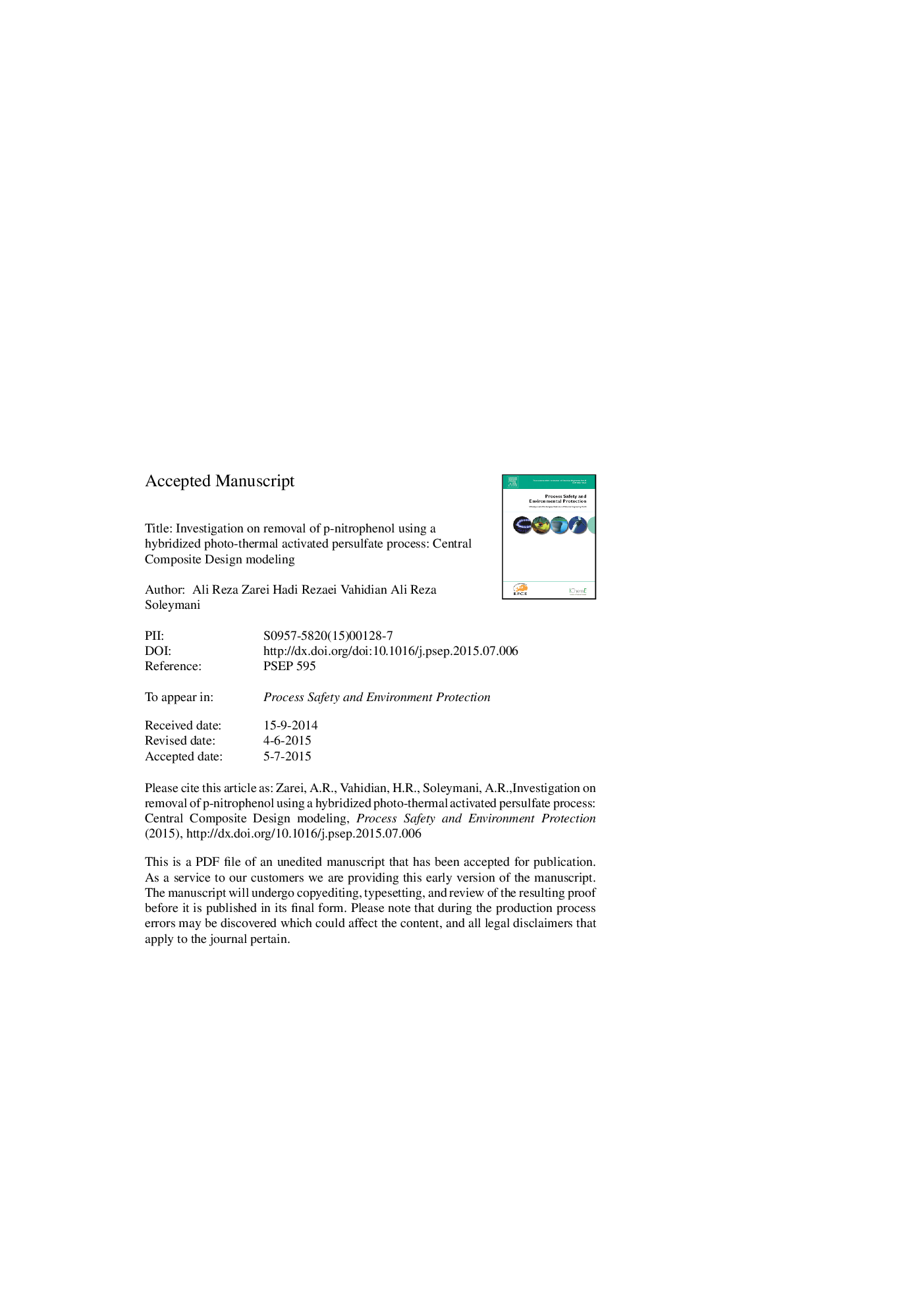| Article ID | Journal | Published Year | Pages | File Type |
|---|---|---|---|---|
| 6974386 | Process Safety and Environmental Protection | 2015 | 25 Pages |
Abstract
The aim of this work is the study of p-nitrophenol (PNP) removal, as a nitroaromatic compound, using a hybridized photo-thermally activated potassium persulfate (KPS) in a fully recycled batch reactor. Response surface method was used for modeling the process. Reaction temperature, KPS initial dosage and initial pH of the solution were selected as variables, besides PNP degradation efficiency was selected as the response. ANOVA analysis reveals that a second order polynomial model with F-value of 41.7, p-value of 0.0001 and regression coefficient of 0.95 is able to predict the response. Based on the model, the process optimum conditions were introduced as initial pH of 4.5, [KPS]0 = 1452 mg/L and T = 66 °C. Also experiments showed that using thermolysis and photolysis of the persulfate simultaneously, the role of thermolysis is not considerable. A pseudo first order kinetic model was established to describe the degradation reaction. Operational cost, as a vital industrial criterion, was estimated so that the condition of initial pH of 4.5, [KPS]0 = 1452 mg/L and T = 25 °C showed the highest cost effective case. Under the preferred mild condition, the process will reach to 84% and 89% of degradation and mineralization efficiencies, after 60 and 120 min, respectively.
Related Topics
Physical Sciences and Engineering
Chemical Engineering
Chemical Health and Safety
Authors
Ali Reza Zarei, Hadi Rezaeivahidian, Ali Reza Soleymani,
